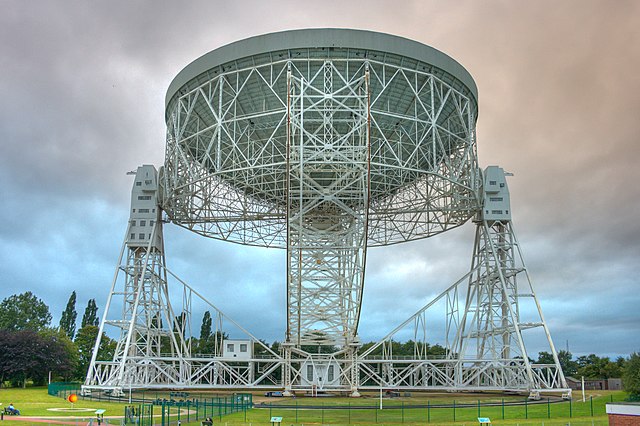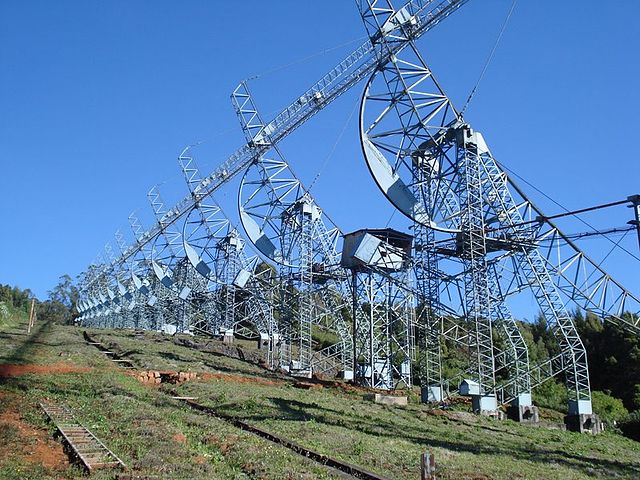The Lovell Telescope is a radio telescope at Jodrell Bank Observatory, near Goostrey, Cheshire, in the north-west of England. When construction was finished in 1957, the telescope was the largest steerable dish radio telescope in the world at 76.2 m (250 ft) in diameter;
it is now the third-largest, after the Green Bank telescope in West Virginia, United States, and the Effelsberg telescope in Germany.
It was originally known as the "250 ft telescope" or the Radio Telescope at Jodrell Bank, before becoming the Mark I telescope around 1961 when future telescopes were being discussed. It was renamed to the Lovell Telescope in 1987 after Sir Bernard Lovell, and became a Grade I listed building in 1988. The telescope forms part of the MERLIN and European VLBI Network arrays of radio telescopes.
The Lovell Telescope
The Mark 1 under construction. Credit: Jodrell Bank.
The Mark 1 under construction. Credit: Jodrell Bank.
The Lovell telescope mid-resurfacing in 2002.
A radio telescope is a specialized antenna and radio receiver used to detect radio waves from astronomical radio sources in the sky. Radio telescopes are the main observing instrument used in radio astronomy, which studies the radio frequency portion of the electromagnetic spectrum emitted by astronomical objects, just as optical telescopes are the main observing instrument used in traditional optical astronomy which studies the light wave portion of the spectrum coming from astronomical objects. Unlike optical telescopes, radio telescopes can be used in the daytime as well as at night.
The 64-meter radio telescope at Parkes Observatory as seen in 1969, when it was used to receive live televised video from Apollo 11
Antenna of UTR-2 low frequency radio telescope, Kharkiv region, Ukraine. Consists of an array of 2040 cage dipole elements.
Full-size replica of the first radio telescope, Jansky's dipole array of 1932, preserved at the US Green Bank Observatory in Green Bank, West Virginia.
Ooty radio telescope, a 326.5 MHz dipole array in Ooty, India








